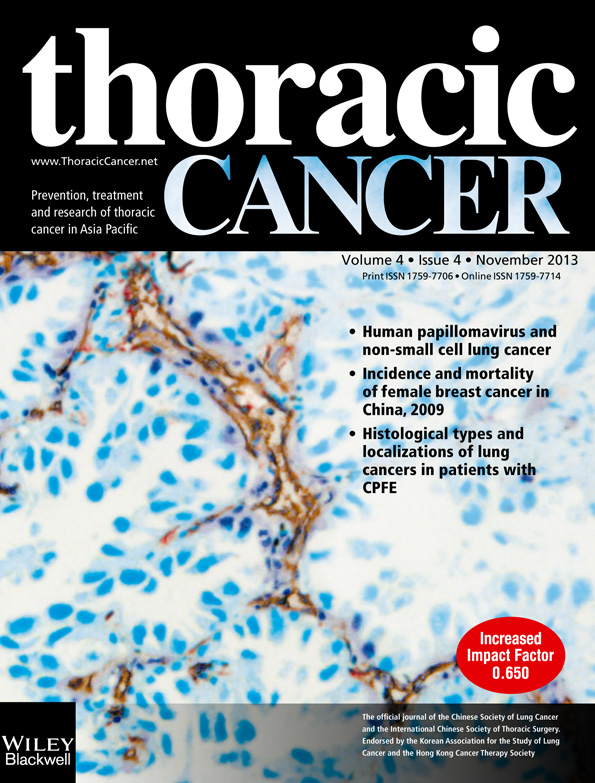Fully thoracoscopic versus conventional open resection for esophageal carcinoma: A perioperative comparison
Abstract
Background
To compare the efficacy of patients undergoing esophagectomy for cancer in video-assisted thoracoscopic surgery (VATS) versus traditional open surgery (TOS) in the perioperative period, along with the advantages and disadvantages of each.
Methods
A retrospective analysis of 108 patients, who underwent esophagectomy between September 2011 and February 2012 in our department, was performed. Patients were divided into two groups based on operative technique (VATS vs. TOS), with 50 patients in the VATS group and 58 patients in the TOS group. Operative duration, intraoperative blood loss, intraoperative blood transfusion, number of lymph nodes harvested, postoperative pain score, period of time requiring chest tube drainage, complications, hospital stay, and hospital costs, were all statistically analyzed between the two groups.
Results
There was no statistical difference between the two groups with regard to operative duration or number of lymph nodes harvested. The VATS group had significantly less intraoperative blood loss, intraoperative blood transfusion, postoperative pain, earlier ambulation, shorter postoperative hospital stay, and a shorter period of time requiring chest tube drainage. The amount of drainage was significantly lower in the TOS group (P < 0.05). Pulmonary complication (pneumonia and pleural effusion) was less prevalent among the VATS group.
Conclusion
Compared with TOS, VATS-assisted esophagectomy is less traumatic with lower intraoperative blood loss, faster recovery, and a better overall outcome.




